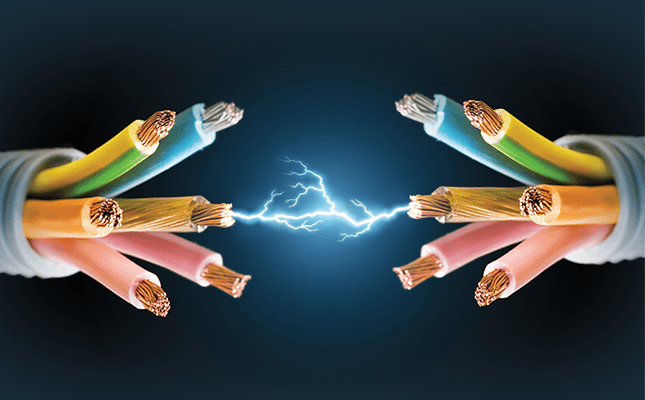Elevate floors, not your risks
AROUND 40% OF ALL FIRES IN BUILDINGS AROUND INDIA ARE CAUSED DUE TO ELECTRICAL FAULTS
Fighting fires in residential areas, especially in high rise buildings, is a complex task. When it comes to power consumption, high rise buildings may consume around 1-2 megawatts of power, often requiring the arrangement of dedicated high-tension feeders. Higher the power, greater the risk!
The architectural design of a building, as well as the electrical design and wiring, play an important role in determining how fire is prevented and brought under control in a building.
WHAT CAUSES ELECTRICAL FIRES
As per data from Central Electricity Authority of India (CEA) around 42% of the fires are caused due to defective electrical systems. A number of factors are responsible for such incidents.
QUALITY OF CABLES
The majority of short circuit-led fire incidents are caused due to poor quality wiring. While Copper is the ideal conductor of electricity and is the best fit for use in cables, aluminum is used at times, to cut costs. These may lead to overheating of wires thus damaging the insulation which may further lead to short circuits or fires.
INSULATION
Aging can damage insulation of cables and cause short circuit. In many cases, insulation of wires in old buildings is not inspected. Similarly, quality of insulation is often compromised to save costs. This could later endanger lives of people and cause significant loss to property.
VIOLATION OF NORMSICA India states that a quarter of electrical fire incidents occur because proper procedure and norms are not followed during construction. This includes incompetent circuit design, improper wire sizing, poor quality work done by untrained workforce, and violation of code. It is also noted that there is a general lack of awareness about National Electrical Code (NEC) of India and National Building Code of India (NBC), which also has laid down guidelines for ideal electrical systems. But in contrast, adherence to NBC or NEC which lays down key rules for electrification is voluntary and not mandatory. |

MEASURES TO BE TAKEN FOR BETTER ELECTRICAL SAFETY
USE DURABLE CONDUCTOR IN CABLES
As stated earlier, aluminum is used in many cables as conductor. However, Electrolyte Tough Pitch (ETP) grade copper with 99.9% purity is recommended as it has better conductivity and heat resistance. It works to considerably minimize the heat and resistive losses within the cable. Being more ductile than other metals it also reduces the stress on conductor strands inside the cable.

USE FIRE SURVIVAL CABLES IN CRITICAL EMERGENCY CIRCUITS
Fire Survival Cables are a vital component of emergency circuits systems. In case of a fire facilities such as emergency lighting, sprinklers, fireman’s lift and fire prevention equipment need to be kept functional. Fire survival cables are built and tested to withstand around 950 degrees C of temperature for 3 hours. They maintain circuit integrity under high temperature and prevent emission of dangerous gasses as well as spread of fire. FS cables are typically tested on thee parameters: flammability, smoke density, and HCL emission. There is a wide array of British standards related to FS cables which are also followed in India. The BS 6387 is one of the most important FS cables standards under which the circuit integrity of the cable is tested.
DEPLOY RCD, RCBO OR AFDD TYPE CIRCUIT BREAKERS
High-rise buildings tend to consume high amount of power. Here, it is advisable to deploy a suitable circuit breaker system like RCD, RCBO or AFDD etc. to protect users from electrical shocks. Each of the circuits within the building can be further enabled with miniature circuit breakers (MCB). This will lead only one particular circuit to trip in case of a short circuit or an overload. Be sure to earth all power sockets with an earth conductor. This is then connected to the ground pits.
DESIGN SEPARATE CIRCUITS FOR MAJOR LOADS
Separate circuits can be laid for major loads such as lifts, pumps and emergency lighting in a high-rise building. Also, an overall growth of 15-20% in the load in future should be considered while electrifying a high-rise building.
CONCLUSION
Many times, lack of awareness about Standards, and compromising quality to cut costs in electrification leads to installation of poor quality electrical infrastructure and wiring in high rise buildings. ICA India works to raise awareness about taking the critical steps that could make a large difference when it comes to electrical safety of your facility. Join our initiatives and training programmes to learn more about providing a better and safer electrical design to all sorts of facilities.

